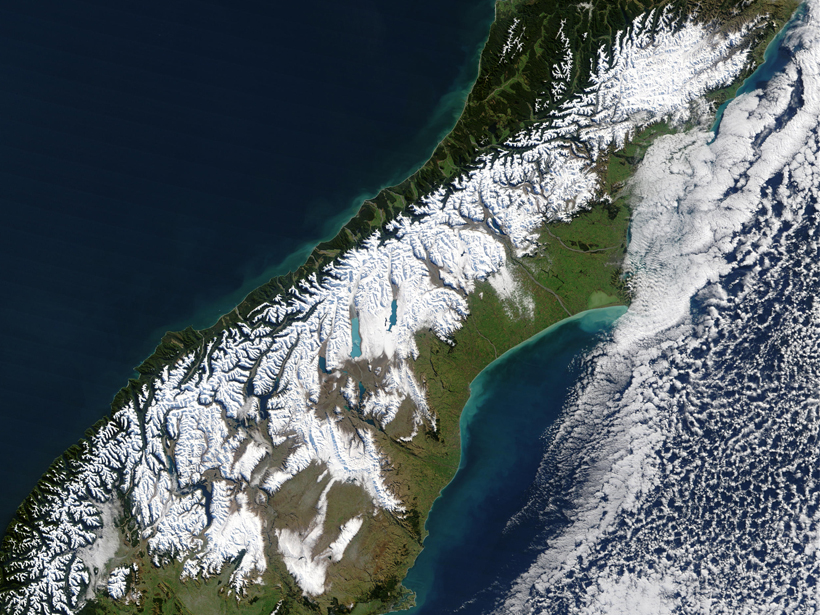Source: Geochemistry, Geophysics, Geosystems
New Zealand’s Alpine Fault, which runs for hundreds of kilometers along the length of the country’s South Island, is one of the globe’s major geological features. Geological evidence indicates that the fault produces an earthquake of about magnitude 8 every 330 years on average. Given that the most recent earthquake was in 1717, the region is due for another.
A new analysis by Bourguignon et al. gives insight into why these earthquakes happen by determining how often and where small temblors occur near the fault. After analyzing data from a network of seismographs along the fault’s central portion—instruments that measure the ground shaking intensity, direction, and duration—the team calculated that the depth distribution and frequency of earthquakes vary consistently with distance from the fault. Quakes that occur just below the fault are scant and deep; those that erupt farther out are more frequent and shallow.
The team detected more than 1300 earthquakes between 2008 and 2010 near the townships of Harihari and Ross. They used these data and seismological techniques similar to those used to produce magnetic resonance imaging (MRI) and computerized tomography (CAT scan) images of human bodies to detail the structure of the Earth’s crust next to the Alpine Fault. They concluded that variations in temperature across the Alpine Fault affect the depths of earthquakes and that variations in the rates at which the rocks are deforming control the frequency of earthquakes. Such studies are crucial for understanding the processes and factors that trigger earthquakes. (Geochemistry, Geophysics, Geosystems, doi:10.1002/2014GC005702, 2015)
—Julia Calderone, Freelance Writer
Citation: Calderone, J. (2015), Probing for earthquakes’ origins, Eos, 96, doi:10.1029/2015EO035957. Published on 22 September 2015.
Text © 2015. The authors. CC BY-NC 3.0
Except where otherwise noted, images are subject to copyright. Any reuse without express permission from the copyright owner is prohibited.

